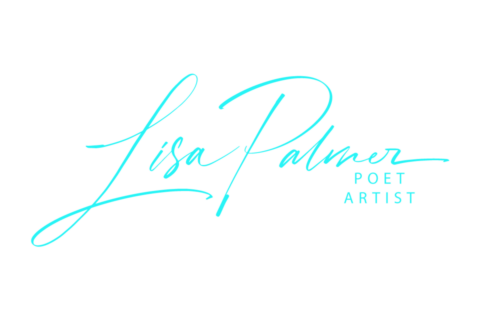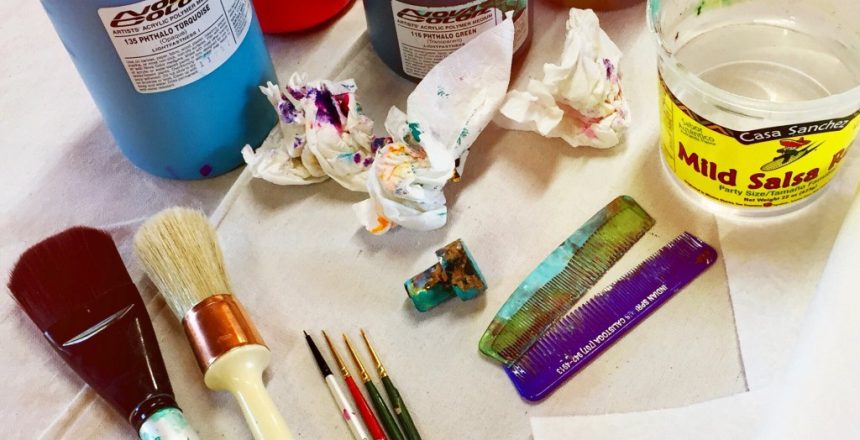(note: these are my personal preferences, to help get you started. Every artist eventually figures out what they like best, there are a myriad of choices out there!)
-
Painting Surface: for this #31daysofpainting game, you’re going to need a sturdy surface to paint on. I recommend using a stretched canvas, of at least 18″x24″. (I’m going to use a bigger canvas myself!) Yes, even if you’ve never painted before, even if this is just an experiment for you, painting on the best kind of surface will set you up for success. And help you feel like an artist I don’t recommend canvas boards because they warp if they get too wet, and since you’ll be painting on this piece a lot of days, you’ll want a surface that will stay sturdy. You can get stretched canvasses pretty cheaply at Michael’s, or Dick Blick or Hobby Lobby, etc., but my personal preference is to support my local art store — they need our support to stay in business!
-
Paints! Well, I could write a book on this, but don’t worry, I won’t! LOL! The more pigment in the paint, the richer, deeper, more beautiful the colors. So how do you know which paints have lots of pigment? Well, the price is your first clue. Those little 2 oz. craft paints are cheap because they have very little pigment. I don’t recommend them for painting on canvas. If you’re just starting out, try Liquitex’s Basics line, or Blick’s Studio Acrylics, good quality in tubes, rich colors. Get yourself about 6 colors that you love, plus black and white. Available at the same places as the canvasses above.
-
Paints, a step up: Better quality would be the pigment-rich heavy body paints by Blick, Liquitex or Golden. These can get pricy, but worth every penny if you want to produce truly beautiful art. If you saw a side by side comparison of a painting painted with craft paints next to one painted with heavy body acrylics, you’d understand.
-
Paints, my personal favorite: NovaColor paints, hands down. Dreamy, creamy, rich and much less costly than the heavy body acrylics mentioned above. Favored by professional mural artists, so you know they are highest quality in order to be seriously vivid and withstand the elements. They come in jars and are the consistency of pancake batter, so not heavy and not fluid, somewhere in between. You probably haven’t heard of them, and that’s why they’re less expensive. They are made by and sold direct by a single small factory in Los Angeles, with none of the advertising/promotion/retail markups those other brands have. I think they are far superior to those other brands. My faves are their Transparent Yellow Oxide, Fluorescent Red, Blue Green, Quinacridone Magenta, and well, all of them really! And no, I am not affiliated with them, I just love them and once I discovered them my painting game really improved. They will send you a terrific handmade color chart if you ask via their email. Here’s a link to order: NovaColor Paints
-
Brushes: If you’re starting out, Michael’s has some good inexpensive assortment sets, like these: Brushes Assortment . Collecting great paintbrushes can quickly become a new shopping addiction, LOL, and besides my local art store’s selection, I like to buy my brushes from Rosemary & Co. They are beautifully made tools, very reasonably priced, considering that they are handmade in England. They are packaged so nicely too! And c’mon, receiving a little box from England is pretty cool!!!
-
Everything else: Again, it depends how you paint, but at the very least you’ll need a small bucket or two of water (always put your brushes in water, don’t let them dry with paint on them!). I use old plastic quart salsa containers. And you’ll want to have a palette to squeeze out your globs of paint, with room to blend some of them. Old cookie sheets work great for that, and you can usually find those at most thrift stores. I also like to use paper palettes like these for ease of clean-up. Remember, you can reuse palettes over and over as the paint dries, just plop new paint over the dried stuff. And you’ll need some paper towels or old rags (cut up old washcloths and t-shirts work great), not just to clean up spills and wipe your brushes on, but you can also wad them up and use them to paint/blend/texture on your canvas. Depending on where you paint, you’ll probably want to protect your table with a plastic drop cloth or trash bags. Having a dedicated painting spacemakes life so much easier, so you can leave out all your tools and supplies and not have to spend time cleaning up and setting up every day.

